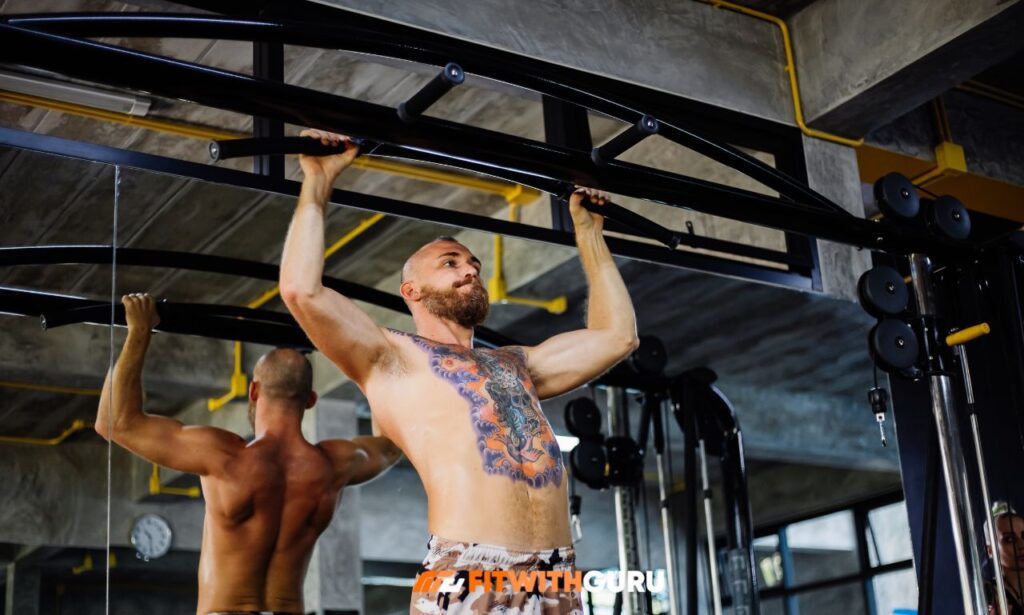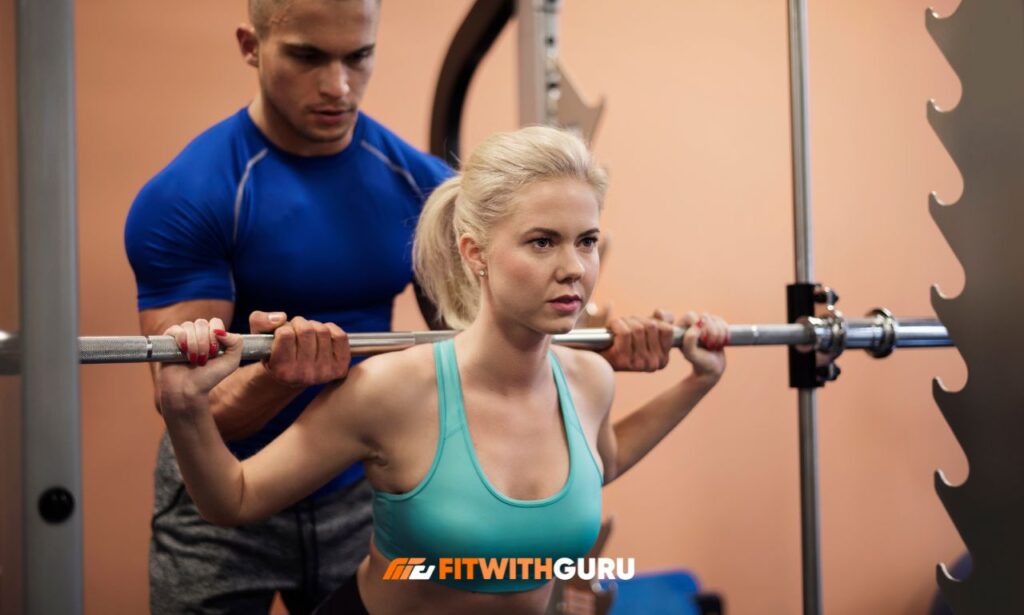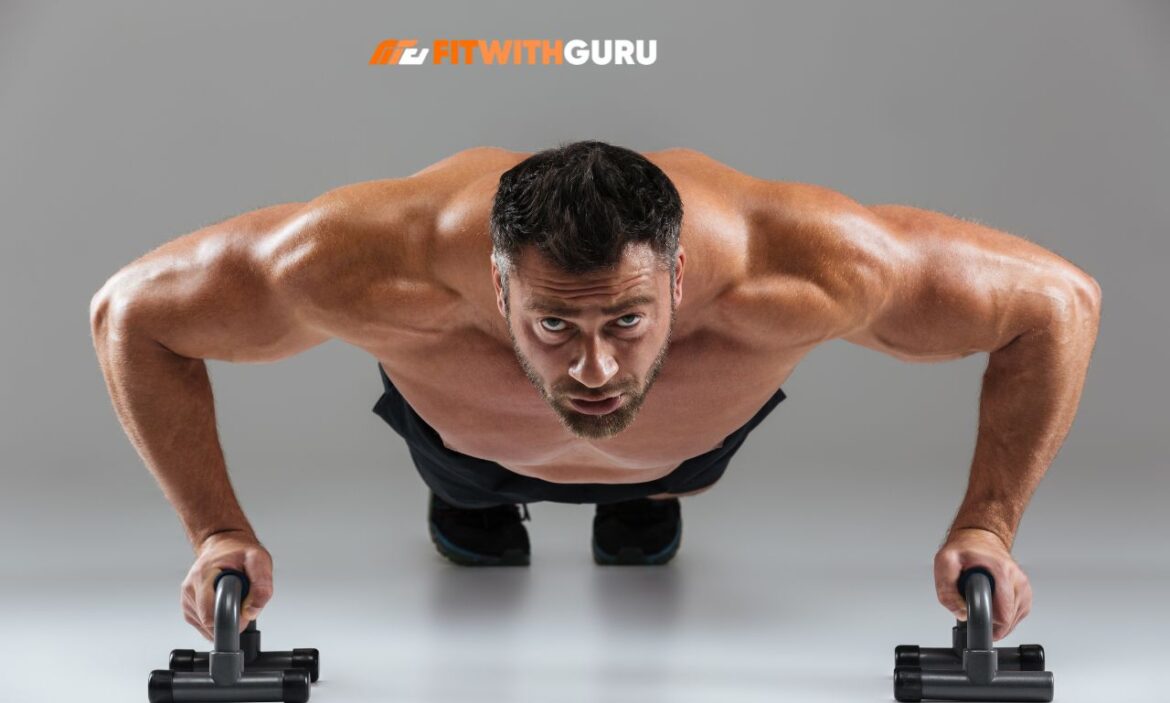Calisthenics bodybuilding has revolutionized how athletes build muscle without ever touching a dumbbell or barbell.
This training method combines the muscle-building principles of traditional bodybuilding with the functional strength and control that calisthenics offers. The result? A sculpted, proportionate physique built purely through mastering your own bodyweight.
What Makes Calisthenics Bodybuilding Different from Traditional Training
The fundamental difference between calisthenics bodybuilding and regular resistance training lies in how your muscles engage during each movement.
When you perform a weighted bench press, your stabilizer muscles barely activate because the machine guides the motion for you.
Contrast that with a one-arm push-up variation where your entire core, obliques, and even your legs must fire simultaneously to prevent rotation.
A calisthenics bodybuilding program develops what fitness professionals call “relative strength”—the ability to move your body efficiently through space.
The progressive overload principle still applies, but instead of adding weight to a bar, you manipulate leverage, tempo, range of motion, and movement complexity.
1. The Push Progression Protocol

The push progression protocol targets your chest, shoulders, and triceps through strategic manipulation of body angles and hand positions.
Start with incline push-ups where your hands rest on an elevated surface, reducing the percentage of bodyweight you’re pressing.
As strength develops over 2-3 weeks, gradually lower the surface height until you’re performing standard push-ups on the floor.
Advanced practitioners incorporate archer push-ups, where one arm performs most of the work while the opposite arm provides minimal assistance.
Structure this routine as follows: perform your most challenging variation first for 3-4 sets of maximum quality reps, then drop down to an easier variation for 2-3 additional sets to accumulate volume.
Rest periods should range from 90 seconds to 3 minutes depending on exercise difficulty and your conditioning level.
2. The Pull Mastery System
Your back development separates average physiques from imposing ones, and the pull mastery system delivers that V-taper everyone desires.
Begin with Australian rows (also called inverted rows) using a bar set at waist height, keeping your body rigid as you pull your chest toward the bar.
Simultaneously work on negative pull-ups—jump or step up to the top position, then lower yourself as slowly as possible over 5-10 seconds.
Once you’re performing 10+ strict pull-ups, introduce variations: wide grip for outer lat emphasis, close grip for inner back density, L-sit pull-ups for core integration.
A calisthenics workout plan focusing on pull strength should include 4-5 different pulling exercises per session, cycling through various grips and body positions.
Progressive overload comes from adding reps, slowing down tempo, or advancing to one-arm pull-up progressions.
3. The Leg Domination Blueprint
Many calisthenics practitioners neglect leg training because they wrongly assume bodyweight can’t build impressive lower body mass.
The leg domination blueprint proves otherwise by utilizing unilateral movements, tempo manipulation, and explosive variations that torch muscle fibers.
Start with Bulgarian split squats—elevate your rear foot on a bench and lower into a deep lunge position that maximally loads your front leg.
Progress to pistol squat variations by gradually increasing range of motion and decreasing assistance over several weeks.
Add jump squats and jump lunges for explosive power that recruits fast-twitch muscle fibers (the ones with greatest growth potential).
Structure leg sessions around 3-4 main movements performed for 4-5 sets each, focusing on maintaining perfect form even as fatigue accumulates.
4. The Core Sculptor Sequence
A thick, powerful core separates bodyweight enthusiasts from true calisthenics bodybuilders who can hold advanced static positions.
Begin with hollow body holds—lie on your back, press your lower back into the floor, and extend arms overhead while raising legs slightly.
Progress to hanging knee raises, then hanging leg raises, then toes-to-bar movements that combine hip flexor strength with abdominal power.
For oblique development, incorporate side planks with leg raises and dragon flag progressions that demand extreme core control.
Your calisthenics bodybuilding program should include dedicated core work 3-4 times weekly, treating these muscles with the same intensity you apply to chest or back training.
5. The Vertical Push Pathway
Overhead pressing builds capped shoulders and massive triceps, and handstand push-ups represent the ultimate vertical push for calisthenics athletes.
Start with pike push-ups—assume a downward dog position and lower your head toward the floor, emphasizing shoulder flexion over horizontal pressing.
Practice handstands against a wall to build confidence being inverted, starting with short 10-15 second holds and gradually extending duration.
Once comfortable, attempt negative handstand push-ups: kick up to handstand, lower slowly with control, then safely exit the position.
A calisthenics workout plan free from equipment limitations still delivers exceptional shoulder development through these progressive variations.
Perform vertical push work 2 times weekly, allowing adequate recovery since shoulder joints adapt more slowly than muscle tissue.
6. The Hybrid Strength-Hypertrophy Protocol
The hybrid protocol merges strength-focused low-rep work with hypertrophy-inducing moderate rep ranges for comprehensive development.
Each session begins with a primary skill or strength movement performed for 3-5 sets of 3-5 reps with maximum effort.
Following your strength work, shift to moderate difficulty variations performed for 3-4 sets of 8-15 reps to accumulate metabolic stress and muscle damage.
The combination of mechanical tension (from strength work) and metabolic stress (from volume work) triggers multiple pathways of muscle growth.
This approach mirrors how successful bodybuilders train—heavy compounds followed by higher-rep accessory work—adapted perfectly for calisthenics bodybuilding.
7. The Time Under Tension Maximizer
Muscle growth responds powerfully to extended time under tension, and this routine exploits that principle through tempo manipulation.
Instead of performing reps at normal speed, deliberately slow down each phase of movement to keep muscles under constant load.
For example, take 3 seconds to lower during push-ups, pause 2 seconds at the bottom, then take 3 seconds to press back up.
Your calisthenics workout plan gains new effectiveness when you manipulate tempo variables rather than simply chasing higher rep counts.
Perform 3-4 exercises per session using controlled tempo, aiming for sets that last 40-70 seconds (the optimal hypertrophy time under tension range).
8. The Greasing the Groove Method for Skill Acquisition

The final routine focuses on skill development through frequent, submaximal practice sessions spread throughout your day.
Choose one challenging skill (maybe muscle-ups or one-arm pull-up progressions) and perform 40-60% of your maximum reps multiple times daily.
If you can do 5 muscle-ups, you’d perform 2-3 reps every 2-3 hours throughout the day, accumulating 15-20 total reps across 8-10 mini-sessions.
Within 2-4 weeks, movements that previously felt impossible become surprisingly manageable because your nervous system has optimized the motor pattern.
The key? Stay fresh during practice sets—never train to failure, and maintain perfect form on every single repetition.
Structuring Your Weekly Training Split
Organizing these eight routines into a coherent weekly structure determines whether you build muscle or just accumulate fatigue.
Most intermediate practitioners thrive on an upper/lower split performed 4 times weekly: two upper body sessions and two lower body sessions with rest days between.
Advanced athletes sometimes benefit from a push/pull/legs split performed twice weekly for 6 total training sessions.
Here’s a sample weekly structure:
| Day | Primary Focus | Secondary Focus |
| Monday | Horizontal Push/Pull | Core Work |
| Tuesday | Legs + Plyometrics | Handstand Practice |
| Wednesday | Active Recovery | Mobility Work |
| Thursday | Vertical Push/Pull | Time Under Tension |
| Friday | Legs + Core | Hybrid Protocol |
| Saturday | Full Body Circuit | Conditioning |
| Sunday | Complete Rest | Meal Prep |
Adjust training frequency based on recovery capacity, life stress, sleep quality, and nutritional status.
Nutrition Principles for Calisthenics Bodybuilding Success
Even the most perfectly designed calisthenics workout plan free of equipment limitations won’t build muscle without adequate nutritional support.
Aim for 0.8-1 gram of protein per pound of bodyweight daily, sourced from lean meats, fish, eggs, dairy, legumes, and quality protein supplements if needed.
Carbohydrates fuel intense training sessions and replenish muscle glycogen—don’t fall for low-carb trends when trying to build mass through demanding bodyweight training.
Healthy fats support hormone production and should comprise 20-30% of total calories from sources like avocados, nuts, olive oil, and fatty fish.
Track your bodyweight weekly and adjust calories based on progress—gaining 0.5-1 pound weekly suggests appropriate caloric surplus for muscle growth.
Progressive Overload Strategies Beyond Just Adding Reps
Eventually, you’ll reach a point where adding more reps becomes counterproductive—performing 50 push-ups builds endurance, not muscle mass.
Mechanical drop sets work brilliantly: perform archer push-ups to failure, immediately transition to regular push-ups, then finish with incline push-ups.
Weighted vests or dip belts allow traditional progressive overload by adding external resistance while maintaining bodyweight movement patterns.
Range of motion progression challenges muscles differently: deficit push-ups with hands on blocks increase stretch under load, stimulating new growth.
Your calisthenics bodybuilding program should cycle through different progressive overload methods every 4-6 weeks to provide novel stimuli and prevent adaptation plateaus.
FAQs
Can you build muscle with only calisthenics bodybuilding?
Absolutely—calisthenics bodybuilding builds significant muscle mass when you apply progressive overload principles consistently. The key involves making exercises progressively harder through leverage changes, tempo manipulation, and movement complexity rather than simply adding weight. Gymnasts demonstrate that bodyweight training produces dense, well-proportioned muscle development.
How long does it take to see results from a calisthenics bodybuilding program?
Beginners notice strength improvements within 2-3 weeks as neurological adaptations enhance movement efficiency. Visible muscle development typically appears after 6-8 weeks of consistent training with proper nutrition and recovery. Substantial physique transformation requires 6-12 months of dedicated training for most people.
Do I need a gym membership for effective calisthenics workout plan free programs?
No gym membership is required for effective calisthenics training—many athletes build impressive physiques using only a pull-up bar and floor space. Public parks often feature calisthenics equipment including pull-up bars, dip stations, and monkey bars completely free to use.
What’s better for muscle building: calisthenics or weights?
Both methods build muscle effectively when programmed correctly—the “better” choice depends on your goals, preferences, and circumstances. Calisthenics develops relative strength, body control, and functional movement patterns while building aesthetic muscle. Weight training allows easier progressive overload tracking and may produce slightly faster muscle growth in advanced trainees.
How often should I train with calisthenics bodybuilding routines?
Most practitioners achieve optimal results training 4-5 days weekly with strategic rest days for recovery. Beginners often succeed with full-body routines performed 3 times weekly on non-consecutive days. Intermediate and advanced athletes benefit from upper/lower or push/pull/legs splits allowing higher training frequency for each muscle group.
Conclusion
Calisthenics bodybuilding represents a powerful training philosophy that builds functional muscle mass without requiring expensive equipment or gym memberships.
The eight routines outlined here provide a comprehensive framework for developing strength, size, and body control through progressive bodyweight training.
Success requires patience, consistency, and intelligent application of progressive overload principles adapted to leverage-based resistance.
Your calisthenics bodybuilding program should evolve with your capabilities—what challenges you today will eventually become your warm-up as strength develops.
Focus on mastering fundamental movement patterns, prioritize nutrition and recovery alongside training intensity, and track objective progress metrics.
Start with the foundation routines, apply consistent effort, fuel your body properly, and trust the process—your transformation awaits.

